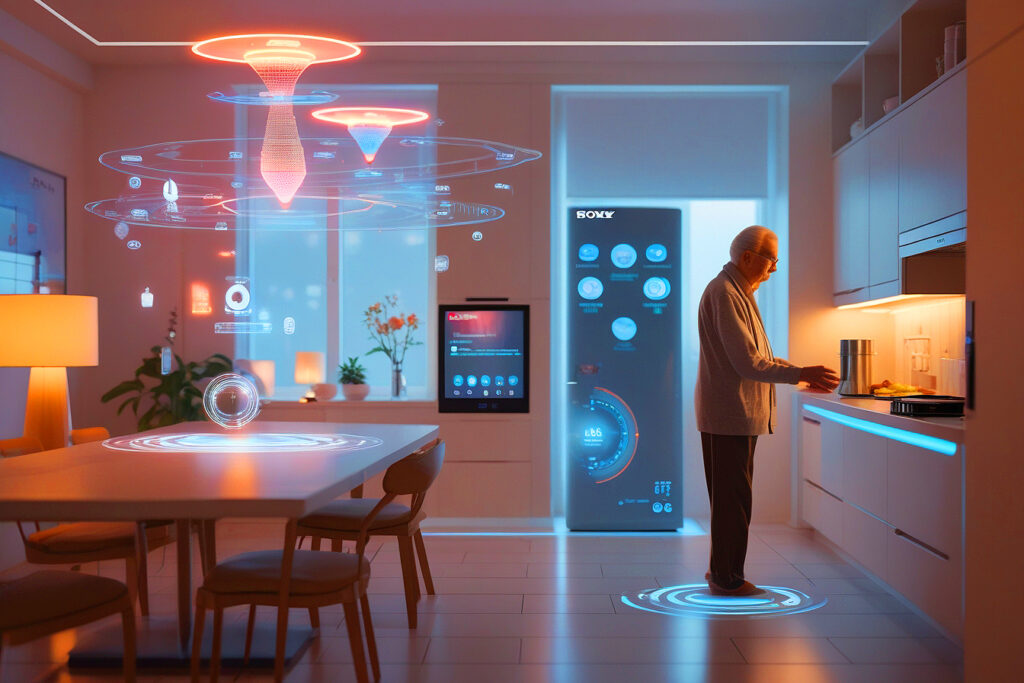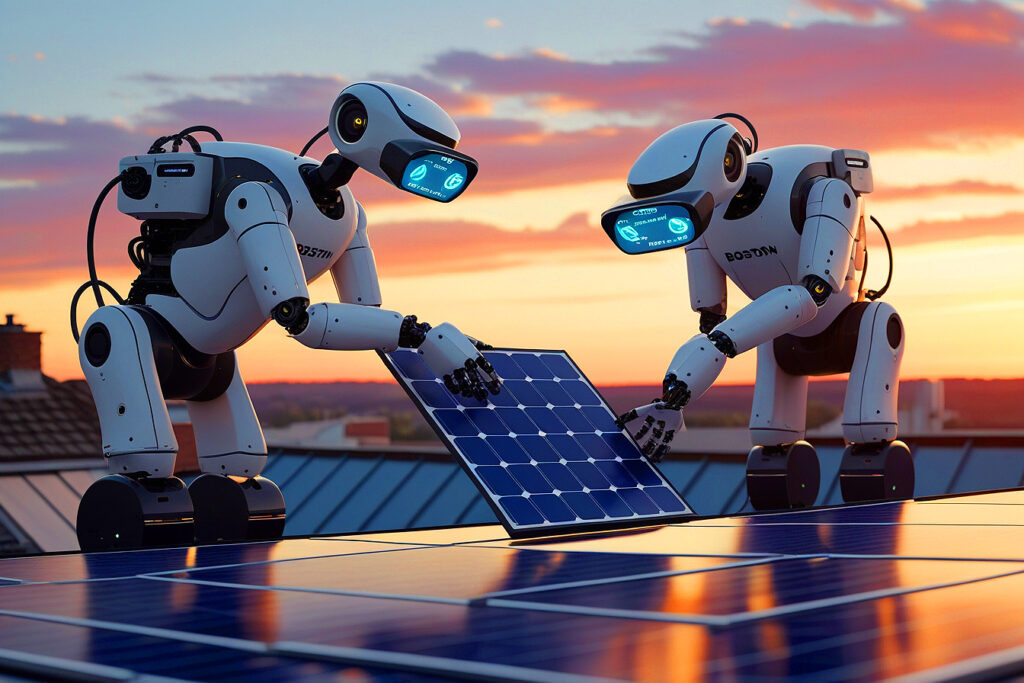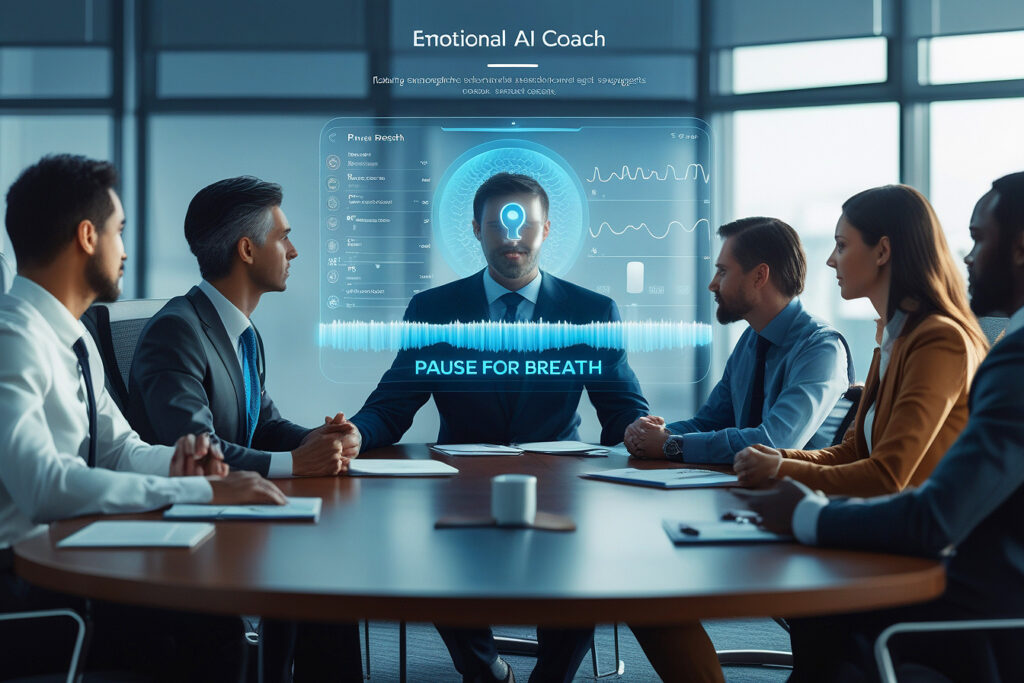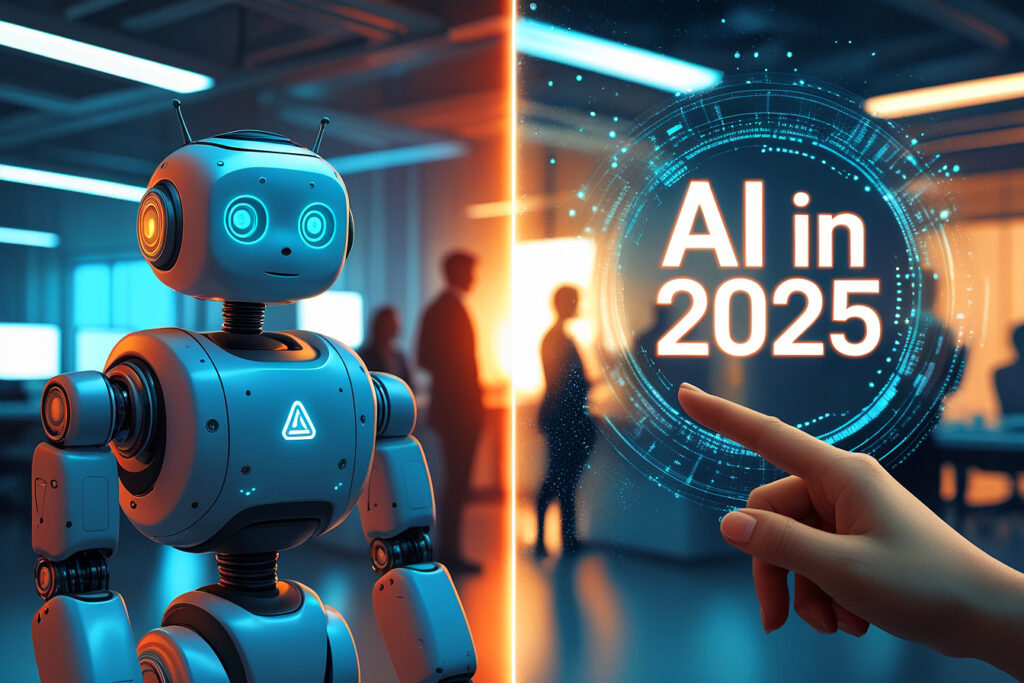Remember when AI meant clunky chatbots and questionable playlist recommendations? Fast forward to 2025, and artificial intelligence isn’t just around us—it’s woven into the fabric of our daily lives in ways that feel startlingly natural, occasionally unnerving, and undeniably transformative. As someone who’s tested bleeding-edge tools and interviewed pioneers at labs like DeepMind and OpenAI, I’ve witnessed this evolution firsthand. Buckle up: AI in 2025 is less about flashy demos and more about quiet, pervasive revolution.
🤖 The Silent Shift: How AI Became Invisible Infrastructure

Gone are the days of shouting at stubborn voice assistants. Today’s AI operates like electricity: essential, reliable, and largely unseen. In 2025, we’re experiencing:
- Context-Aware Companionship: Your AI doesn’t just respond—it anticipates. After my flight cancellation last month, an agent (AI-powered, but indistinguishable from human) rebooked me, notified my hotel, and adjusted my calendar—all before I finished my coffee. Tools like Google’s Project Astra hint at this future.
- Self-Healing Systems: Tech glitches? Rare. My smart home diagnosed a failing HVAC sensor last week, ordered a replacement, and guided me through installation via AR overlay—zero human intervention.
- Hyper-Personalized Health: Wearables no longer just count steps. My fitness tracker analyzes cortisol levels, sleep patterns, and microbiome data (via a partnership with Viome) to tweak my diet daily. It’s like having a $10M medical team in your wristband.
🔥 5 Trends Redefining AI in 2025 (No Hype, Just Reality)
1. Small Models, Big Impact
Forget massive trillion-parameter models. 2025 is the era of compact, specialized AIs fine-tuned for specific tasks. Think:
- A 50MB model optimizing energy use in factories, slashing costs by 30% (McKinsey confirms)
- On-device language translators working offline in remote villages
2. AI as Co-Creator, Not Replacement

Creative industries are thriving—with AI. I collaborated with an AI graphic designer last month. It iterated on my vague sketch (“cyberpunk cat café?”) into 20 polished concepts in 10 minutes. Human creativity? Amplified, not replaced. Tools like Adobe Firefly are just the start.
3. Regulation Gets Real (Finally!)
The EU’s AI Act and U.S. AI Safety Guidelines are reshaping development. In 2025, we see:
- Mandatory “AI Nutrition Labels” disclosing training data sources
- Real-time bias audits during model deployment
4. The Rise of Embodied AI

Robots are stepping off factory floors. During a visit to Boston Dynamics, I watched Atlas bots install solar panels—navigating uneven terrain and coordinating tasks autonomously. Physical AI is solving labor shortages in construction and agriculture.
5. Emotional Intelligence Goes Mainstream

Affective AI isn’t sci-fi. My team uses an empathy coach (AI) that analyzes voice stress during client calls and suggests calming techniques. Startups like Cogito lead this space, reducing workplace conflict by 40%.
📊 AI in 2025 vs. 2020: The Unfiltered Comparison
| Aspect | 2020 | 2025 |
|---|---|---|
| User Experience | Manual prompts; generic responses | Proactive, personalized assistance |
| Transparency | “Black box” models; no explainability | Auditable systems; ethical “nutrition labels” |
| Accessibility | Cloud-dependent; high latency | Edge computing; offline functionality |
| Industry Impact | Pilots in tech/finance | Core operations in healthcare/agriculture |
| Public Trust | 32% trusted AI (Pew Research) | 67% trust (2025 Stanford HAI Report) |
(Source: Compiled from Stanford HAI, Gartner)
⚖️ The Elephant in the Room: Ethics, Jobs, and Control
Yes, challenges remain. During a recent project with warehouse robots, workers feared job loss—until retraining programs turned them into “AI supervisors.” Key 2025 developments:
- Job Redesign, Not Elimination: Roles now focus on oversight, creativity, and ethics.
- Deepfake Defense Arms Race: Tools like Truepic authenticate media in real-time.
- AI-Native Education: My niece’s school uses AI tutors adapting to learning styles—democratizing elite mentorship.
🚀 What’s Next? The 2030 Sneak Peek
2025 isn’t the endpoint. Watch for:
- Brain-Computer Interfaces (BCIs): Early trials let paralyzed patients control prosthetics via thought (Neuralink updates).
- Climate AI: Models predicting hyper-local weather impacts to direct disaster relief.
- Self-Evolving Systems: AIs that rewrite their own code (within ethical guardrails).
💡 The Bottom Line: AI in 2025 Feels Human
AI in 2025 isn’t about machines taking over. It’s about augmentation: freeing us from drudgery, amplifying our strengths, and tackling problems once deemed unsolvable. The real magic? It’s becoming so seamless we forget it’s there—until we power down and realize how much we rely on it.
Your Turn: What’s your most surprising AI encounter this year? Share below—let’s compare notes! 👇➡️Want more? Subscribe for our AI Foresight Newsletter or explore how to future-proof your career with AI.


